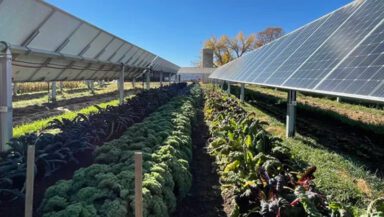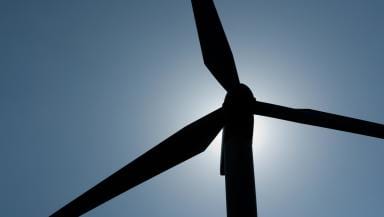Anyone who’s a fan of clean energy has heard the argument that “the wind doesn’t always blow and the sun doesn’t always shine”. This is called ‘intermittency’ – the idea that you might not get a constant flow of power from a particular source.
All energy sources are intermittent. Coal plants can trip, pipelines can explode, and nuclear reactors can be invaded by jellyfish. But it’s a particular challenge for renewable energy.
The wind doesn’t always blow – and that’s ok
Some people think this means we’ll always need lots of giant coal, gas or nuclear power stations (sometimes called ‘baseload’) to keep the lights on. But that’s not really how it works anymore.
Luckily, internet commenters weren’t the first to discover weather or night-time. In fact, people have been working on solving intermittency for a while. Thanks to them, we now know that a good mix of renewable energy can do the job. Here’s how…
1. Wire countries together to share power
Imagine if we could pinch a bit of solar from Spain when we’re low on power. Well, imagine no more.
We’ve already built a few undersea cables called ‘interconnectors’ across to mainland Europe. These allow us to share energy supplies with other countries, and there are plenty more on the way. So if the wind drops in the UK, we can ask our friends in Denmark to share their energy with us.
2. Use giant batteries to store power
If we can store energy on a large scale, we don’t need the wind to be blowing all the time. And this is already happening – massive batteries are popping up all around the country.
You can even let the grid use your electric car battery while it’s plugged in, helping to balance the scales in exchange for free charging.
But batteries aren’t the only way to store power – there are all sorts of other systems in the works, from compressed air to molten salt, to giant flywheels spinning in a vacuum. We don’t know for sure which of these technologies will take off. But because the government has already decided that energy storage is a Big Deal, it’ll soon be as normal as plugging your phone in when you go to bed.
3. Shift power demand away from peak times
So far we’ve talked about sharing and storing the energy we produce, but what about the energy we’re using?
In the UK, demand for electricity peaks during cold winter evenings. These peaks put a lot of strain on the system. But now we’ve got the technology to control the other side of the equation, shifting some of that demand to times when there’s more spare power. And the more demand we can shift, the fewer giant power stations we need.
For example, supermarkets could automatically turn their fridges down during those peak times, helping to balance the grid. And because fridges can hold their temperature for a while, the food stays fresh.
Again, this isn’t theoretical – it’s called ‘demand side response’, and it’s already happening in a few places. Sainsbury’s are using their fridges to help balance the grid, and Marriott hotels have trialled a similar setup with their air conditioners. Heavy industry is getting in on the action too: road materials company Aggregate Industries has hooked up their giant bitumen tanks to an AI-based demand response system.
The last resort: flexible gas plants
As we get better at all this, the grid should stay in good shape – even as renewable energy keeps growing. But we still need to be ready for a worst case scenario where the scales just won’t balance.
And for those moments we’ll keep a little bit of flexible gas power in reserve to make up the difference. And this doesn’t have to mean burning fossil fuels. We can even use a technology called ‘power to gas’ to make this process renewable powered too.
Either way, once we get those other bits right, this will hardly ever be needed. Renewable energy is already powering our lives. And now we can balance supply and demand, there’s no reason why it can’t keep the lights on.



